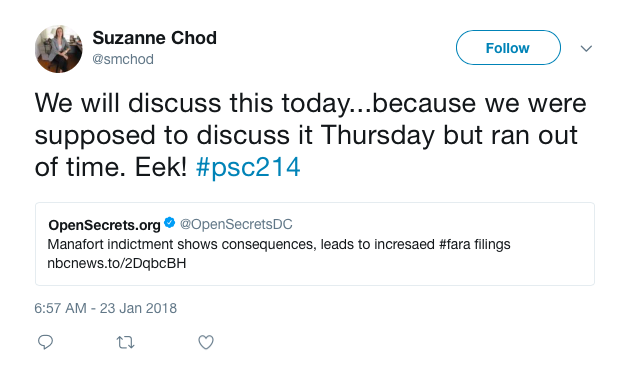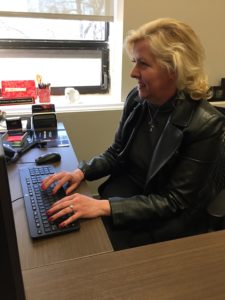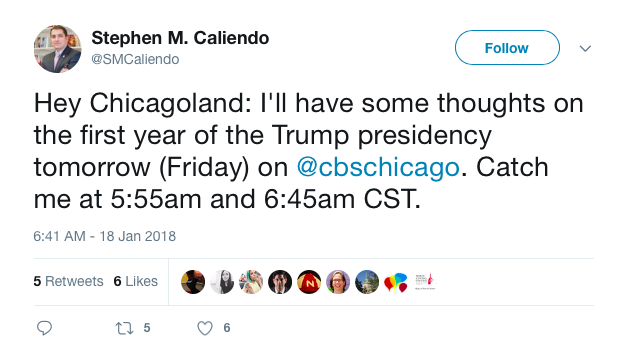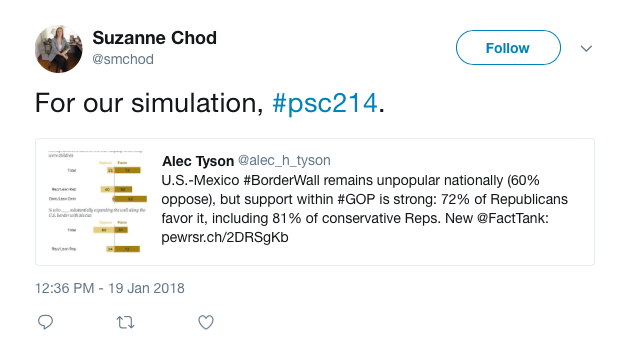In an era where social media reigns supreme, college professors are changing the way they teach to integrate the platforms their students have grown accustomed to. For areas of study like political science and journalism, it is especially important for students to understand how to utilize these platforms.
Political science professors Dr. Suzanne Chod and Dr. Stephen Maynard Caliendo, and journalism professor Dr. Sabryna Cornish are three of many professors on campus who have altered their curriculum to incorporate platforms like Twitter and Facebook.
Dr. Caliendo encourages other educators to use social media in the classroom as well. A few years ago, he and his colleagues co-edited a book that “helps other educators to think about the pedagogical value of using social media in the classroom.”
For Dr. Caliendo, social media is “a way to keep students engaged with the material between class meetings” as well as to “stimulate meaningful discussion for students who are less comfortable speaking in class.”
Four years ago, Dr. Chod made it a requirement for students to use Twitter both in and out of the classroom. She said this is “to take conversations in class and continue them when we are not physically together… to engage with me and each other by sharing news stories, links, images or comments about political news.”
 She also has students live-tweet videos, podcasts and music in class “in order to ‘talk’ to each other without disturbing the viewing and listening.” Her goal in using Twitter is two-fold, saying that “one: it requires students to follow the news and make connections to political science theories and concepts” and “two: it helps students build social capital.”
She also has students live-tweet videos, podcasts and music in class “in order to ‘talk’ to each other without disturbing the viewing and listening.” Her goal in using Twitter is two-fold, saying that “one: it requires students to follow the news and make connections to political science theories and concepts” and “two: it helps students build social capital.”
As a political scientist, Dr. Chod said that her job is “to provide students with the tools to become politically socialized without bias or pressure.” Because of that, she maintains a professional Twitter account where she does not share her political beliefs and personal life.
“My political preferences have no business in the classroom, or on social media where I engage with students. How can I expect students to accept political science theories and concepts as truth if when I present them they are housed within my partisanship, for example? It undermines my teaching and student learning,” she said.
Dr. Caliendo shared similar thoughts, saying “Because I’m a political scientist, I find that keeping professional musings off Facebook, in particular, can be helpful in navigating the relationships with folks who are critical of my ideas or research. Sometimes people just want to know where you’ve eaten, what shows you’ve seen and how your kids are doing.”
Dr. Cornish, on the other hand, expresses her personal beliefs on public platforms like Twitter. “I make political comments on there, I don’t see how you can’t in this day and age.”
However, she assumes everything is public and understands that there can be consequences to what she says. This is something she wants to make clear in class, saying that while her students have “grown up using social media… that doesn’t mean you guys use it well or understand some of the nuances with it.”

Photo by Lexi Heinitz
In her digital writing course, Dr. Cornish has included things like Twitter scavenger hunts, using Snapchat stories and most notably, blogging. This course teaches students how to write for social media and to analyze their own online presence and what that might be saying about them.
“It’s really important because I doubt there’s any job out there that’s not going to require you to know something about that,” she said.
When it comes to finding a balance between personal life and professionalism on social media, Dr. Cornish said “It’s a hard thing to do, especially if I’m asking my students to have social media presence and be aware of it then I feel like sometimes I kind of have to do the same.”
She adds, ‘If I was going to tweet every time I wanted to tweet about some bone-headed thing a student did, my Twitter feed would be full.”
For Dr. Caliendo, his balance has changed over the years. He started out using social media for professional purposes. As Facebook advanced, however, he said that he “began to keep most of (his) professional postings on the professional sites and retain (his) personal account for almost solely personal communication.”
 One thing that all three professors agreed on was their online interactions with current students. Dr. Caliendo does not reach out to add or follow students on social media, but he does accept requests and follow back. He said, “because I’m not sharing anything that is too personal or potentially problematic, I don’t worry, but I do keep that in mind when I post.”
One thing that all three professors agreed on was their online interactions with current students. Dr. Caliendo does not reach out to add or follow students on social media, but he does accept requests and follow back. He said, “because I’m not sharing anything that is too personal or potentially problematic, I don’t worry, but I do keep that in mind when I post.”
Dr. Chod and Dr. Cornish both follow the rule that they will not add students on Facebook until after they graduate, as it tends to be a more personal platform.
Personal or professional, social media is ingrained in today’s culture and it is not going anywhere so students should be conscious of their online presence, especially now that it is commonly used in the classroom.

